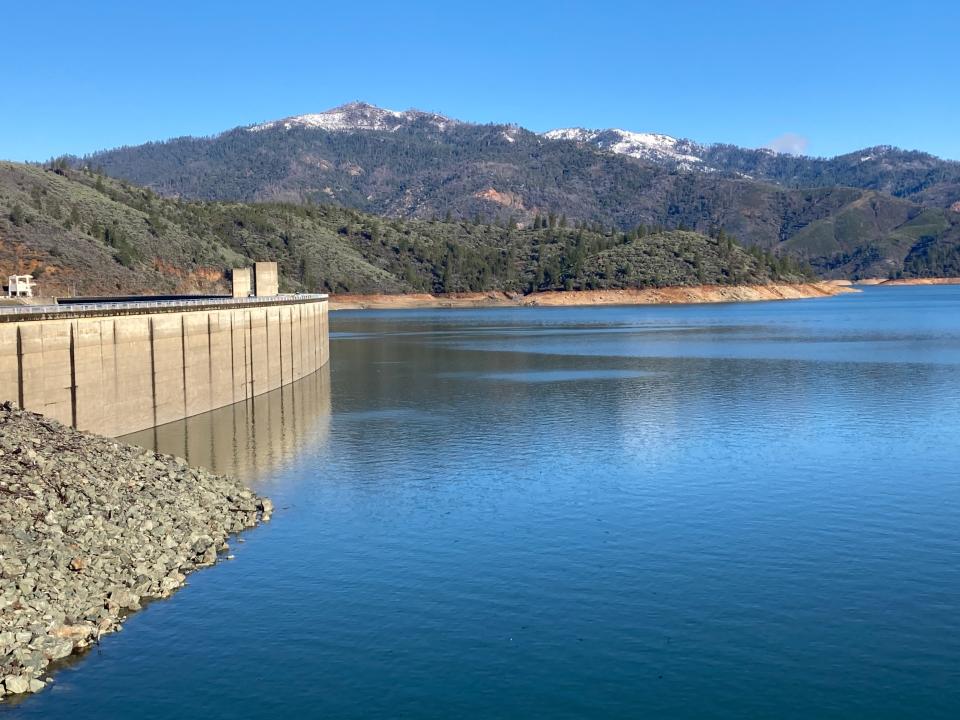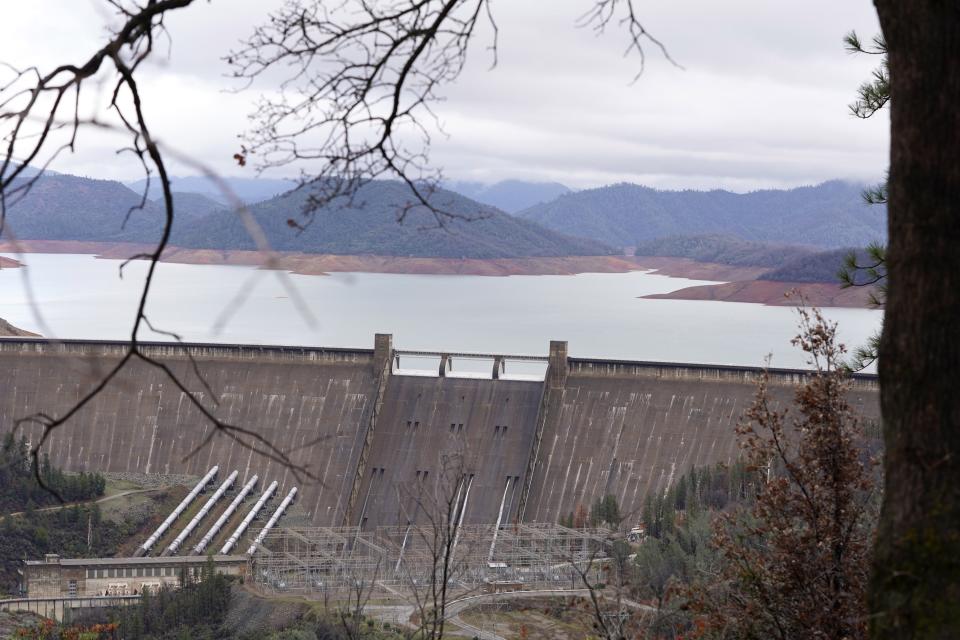California water sources are rising after dramatic wet winter: See Lake Shasta and Diamond Valley Lake grow
Following an extraordinarily wet winter, water is once again roaring into some of California’s largest reservoirs and lakes for the first time in nearly three years.
Southern California’s largest reservoir marked an incredible turnaround Monday when officials from the Metropolitan Water District turned on the taps once again — releasing water transported from Northern California that gushed from valves at 600 cubic feet per second into the 4.5-mile-long Diamond Valley Lake.
The reservoir near Hemet, about 40 miles west of Palm Springs, was built nearly three decades ago and holds twice as much water as all of the region’s other surface reservoirs combined, officials said.
California rain: Trillions of gallons have soaked California. Is this the state's wettest winter ever?

In the North, a steady stream of storms have nearly filled the state’s largest reservoir, Lake Shasta, which has gone up 9 feet over the past week and 118 feet since Dec. 1. As of Wednesday afternoon, Lake Shasta was 82% full, according to Redding Record Searchlight, part of USA TODAY's Network .
When full, the lake holds 4.5 million acre feet. An acre-foot is approximately 326,000 gallons.




California Secretary for Natural Resources Wade Crowfoot said that officials are capitalizing on the dramatic improvement in water supplies after a three year record-breaking drought, which left the region with depleted reservoirs and barely enough resources to meet the needs of 6 million people.
Officials said the reservoir should be fully refilled by the end of the year.
This year, the state has already seen about twice as much precipitation as the entire water year of 2021-22.
“While we’ve been blessed with abundant rain and snowfall this year, it’s only a matter of time before we experience another dry cycle,” Crowfoot said during the announcement at Diamond Valley Lake.
Investing in facilities that capture and store water like the 810,000 acre-foot Diamond Valley Lake reservoir — which provides water for 19 million people in six counties — is crucial for a state facing a “hotter, drier future,” Crowfoot added.
Does all this rain and snow end the drought in California?
California's recent rain and snow have helped pull nearly two-thirds of the state out of drought conditions, but the drought is not quite over.
According to the U.S. Drought Monitor, as of March 23, only 36% of the state is in a drought, compared with the Jan. 1 mark of 100%.
“Clearly, the amount of water that’s fallen this year has greatly alleviated the drought,” said Daniel Swain, a climate scientist at the University of California, Los Angeles. “It has not ended the drought completely, but we’re in a very different place than we were a year ago.”
More coverage from USA TODAY
Trillions of gallons have soaked CA: Is this the state's wettest winter ever?
Going green used to be a luxury.: Now it can save you thousands. Here's how.
Newsletter: Your weekly guide to climate, energy and the environment
America's watersheds: Where are the most toxic watersheds that harm human health and the environment?
Contributing: USA TODAY'S Doyle Rice, David Benda, USA TODAY Network
This article originally appeared on USA TODAY: California's depleted lake levels being filled amid heavy rain storms

 Yahoo Movies
Yahoo Movies 
